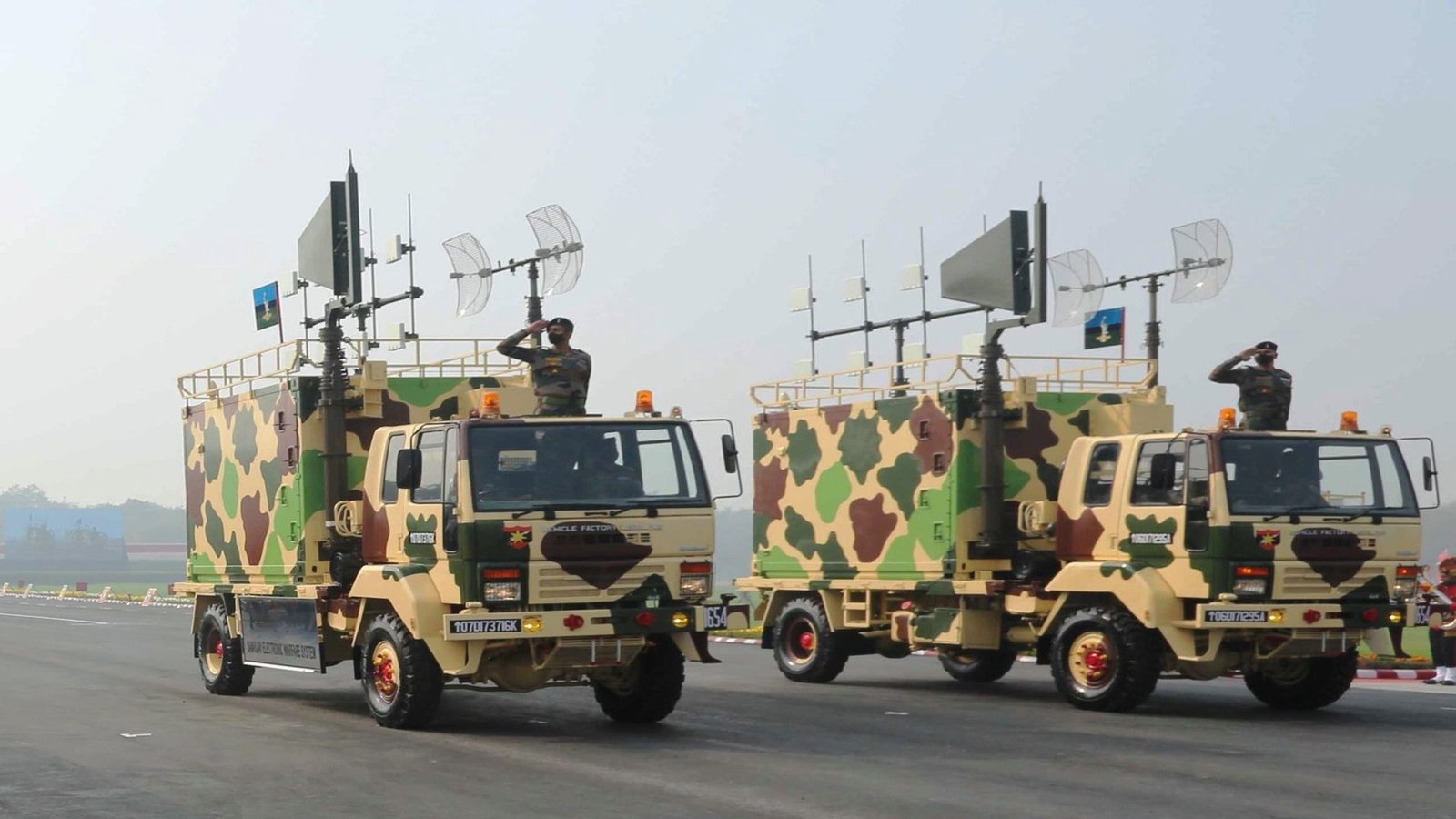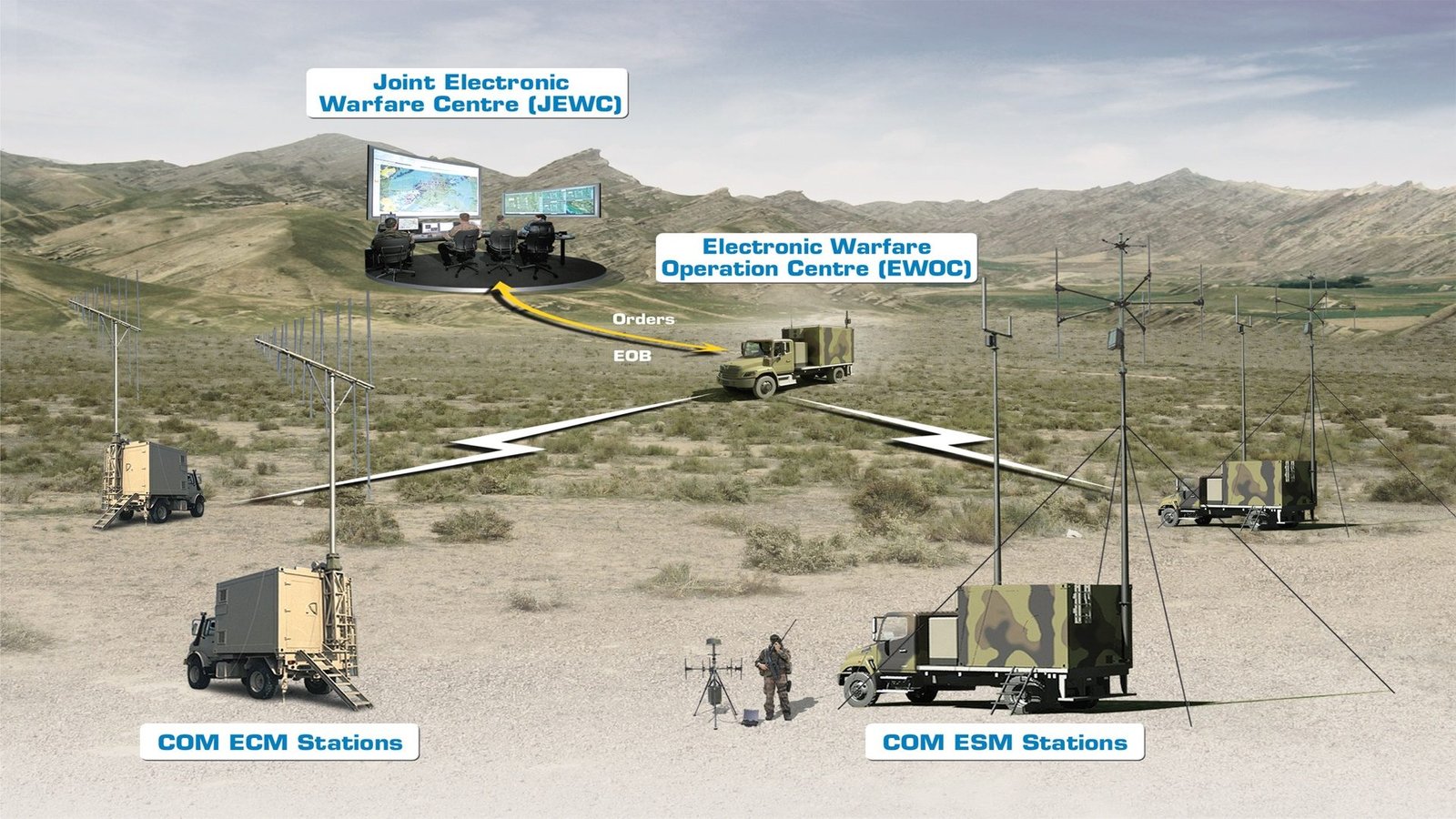Radozar Pvt Ltd: Your Premier Electronic Warfare Solutions Provider
About
Radozar pvt ltd
Radozar stands as a comprehensive innovator in cutting-edge technology solutions, specializing in Electronic Warfare (EW), UATS(unmanned aerial and terrestrial systems), Signal Intelligence, Radar systems, Tactical Communication, Direction Finder, Technical Surveillance Countermeasures (TSCM), and Big Data Analysis. With a keen focus on Satellite and Space technologies, Radozar excels in providing advanced solutions. The company also extends its expertise to the realm of Education and Training, ensuring a skilled workforce for the ever-evolving landscape of defense and technology. Radozar’s commitment to excellence positions it as a leader in multifaceted domains crucial for modern security and communication systems.

About
Radozar pvt ltd
Radozar stands as a comprehensive innovator in cutting-edge technology solutions, specializing in Electronic Warfare (EW), UATS(unmanned aerial and terrestrial systems), Signal Intelligence, Radar systems, Tactical Communication, Direction Finder, Technical Surveillance Countermeasures (TSCM), and Big Data Analysis. With a keen focus on Satellite and Space technologies, Radozar excels in providing advanced solutions. The company also extends its expertise to the realm of Education and Training, ensuring a skilled workforce for the ever-evolving landscape of defense and technology. Radozar’s commitment to excellence positions it as a leader in multifaceted domains crucial for modern security and communication systems.
We're Determined To Give You Best Service Ever
-
Ceritified
Committed to global leadership, we specialize in innovative, eco-friendly electronic equipment, software, and turn-key solutions for industry and technology training, emphasizing excellence, competitiveness, and environmental sustainability.
Electronic Warfare (EW)
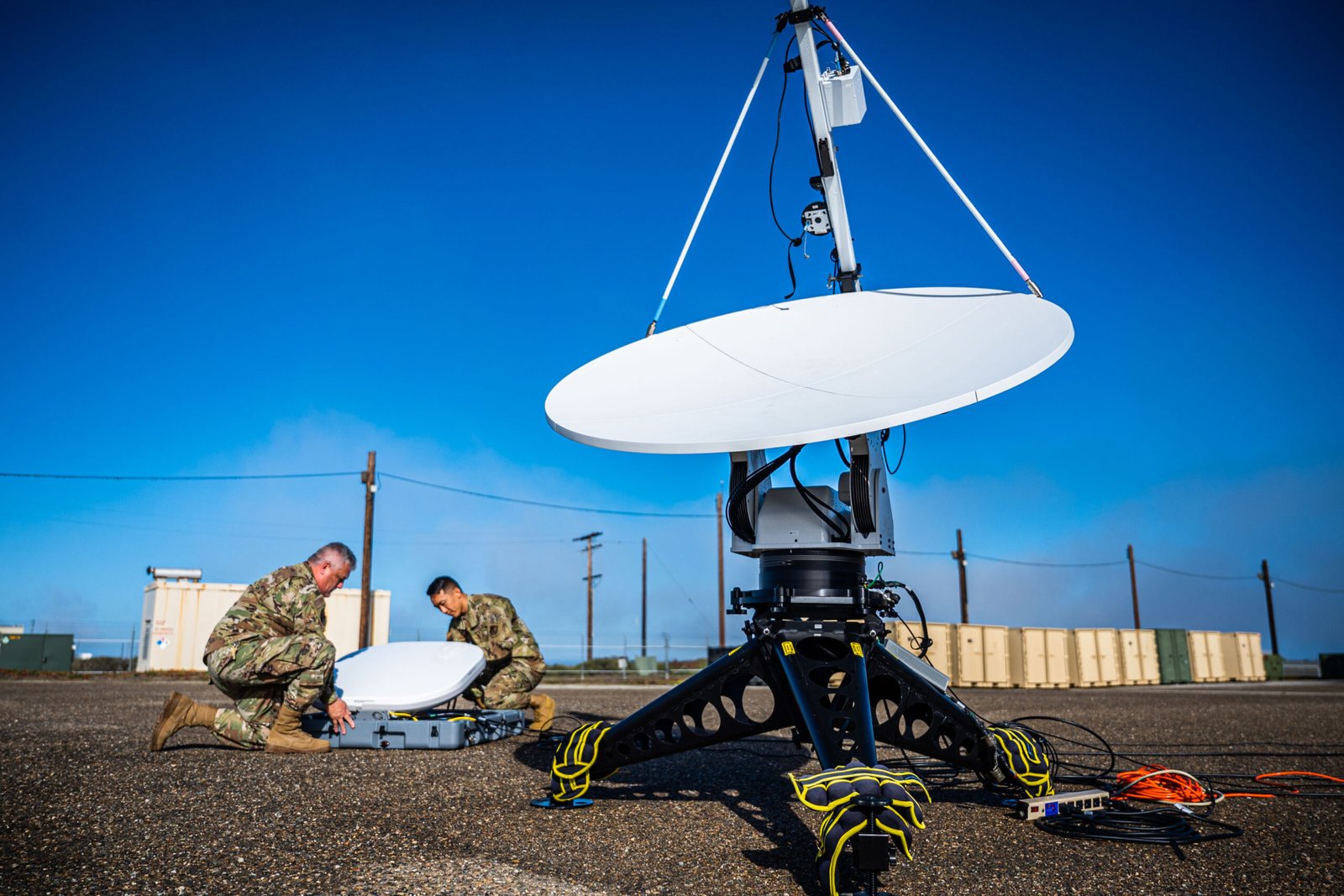
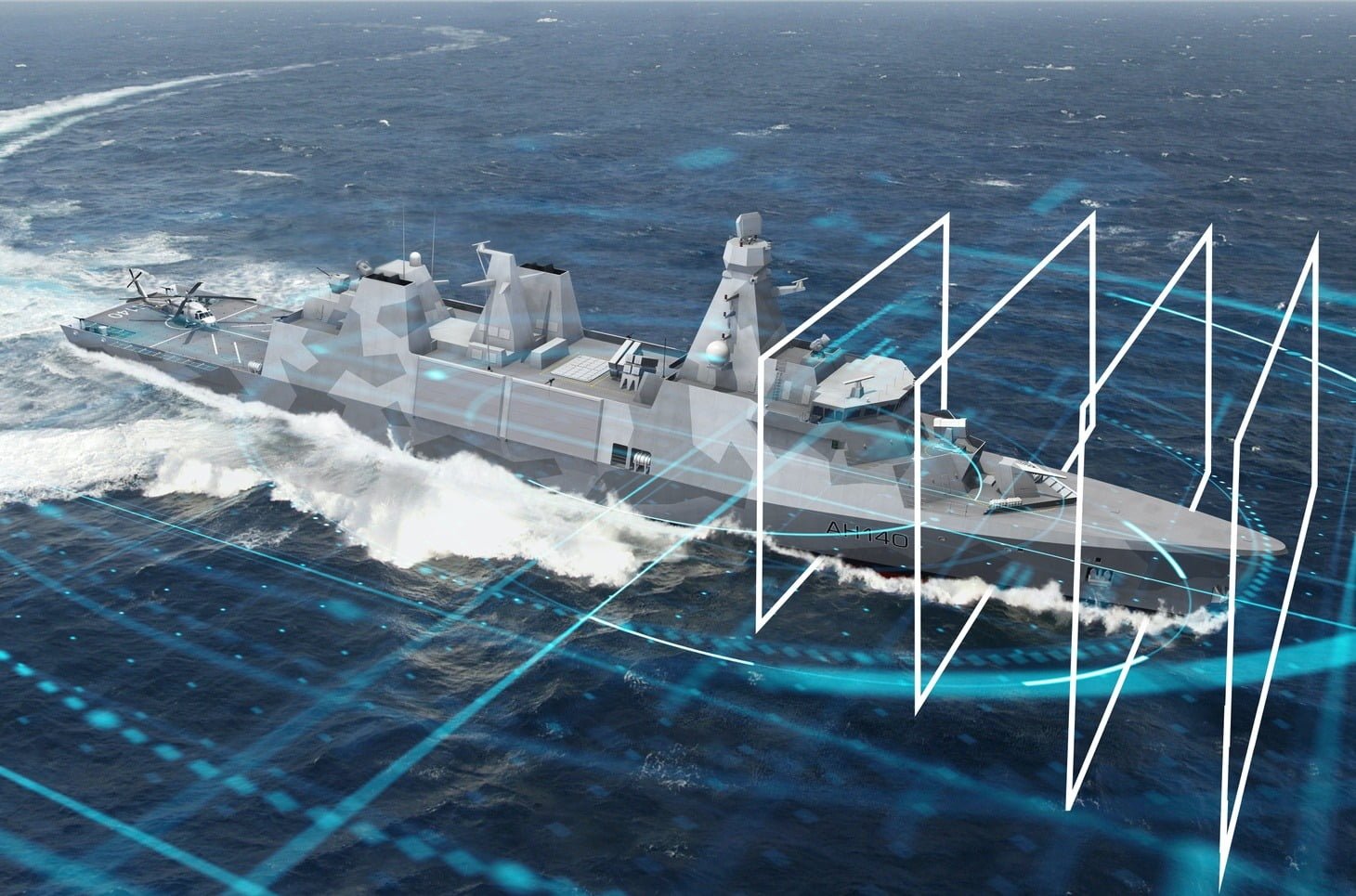

Electronic Warfare (EW) is a crucial component of modern military operations, encompassing a range of technologies and tactics designed to exploit, deceive, or disrupt enemy electronic systems. This multidisciplinary field plays a vital role in gaining a strategic advantage on the battlefield by controlling the electromagnetic spectrum.One fundamental aspect of EW is Electronic Support (ES), which involves collecting, analyzing, and exploiting electromagnetic emissions from both friendly and enemy sources. This enables commanders to gain valuable intelligence, identify potential threats, and understand the electronic environment. Electronic Attack (EA) is another critical dimension, where the focus is on actively disrupting or disabling enemy electronic systems. This can include jamming communication signals, disabling radar systems, or even infiltrating and manipulating enemy networks.
Electronic Protection (EP) is the third pillar of EW, dedicated to safeguarding friendly electronic systems from adversarial interference. EP involves implementing measures such as encryption, frequency hopping, and anti-jamming technologies to ensure the resilience of communication and sensor systems.
EW encompasses various types of technologies, including radar jamming, signal interception, electronic countermeasures, and cyber warfare. Cyber EW, in particular, involves using computer-based techniques to disrupt or manipulate enemy information systems.
In the evolving landscape of modern warfare, Electronic Warfare plays a pivotal role in shaping the outcome of conflicts by providing commanders with the means to control the electromagnetic spectrum, thereby gaining a critical advantage over adversaries.
Electronic Warfare (EW) is a crucial component of modern military operations, encompassing a range of technologies and tactics designed to exploit, deceive, or disrupt enemy electronic systems. This multidisciplinary field plays a vital role in gaining a strategic advantage on the battlefield by controlling the electromagnetic spectrum. One fundamental aspect of EW is Electronic Support (ES), which involves collecting, analyzing, and exploiting electromagnetic emissions from both friendly and enemy sources. This enables commanders to gain valuable intelligence, identify potential threats, and understand the electronic environment. Electronic Attack (EA) is another critical dimension, where the focus is on actively disrupting or disabling enemy electronic systems. This can include jamming communication signals, disabling radar systems, or even infiltrating and manipulating enemy networks.
Electronic Protection (EP) is the third pillar of EW, dedicated to safeguarding friendly electronic systems from adversarial interference. EP involves implementing measures such as encryption, frequency hopping, and anti-jamming technologies to ensure the resilience of communication and sensor systems.
EW encompasses various types of technologies, including radar jamming, signal interception, electronic countermeasures, and cyber warfare. Cyber EW, in particular, involves using computer-based techniques to disrupt or manipulate enemy information systems.
In the evolving landscape of modern warfare, Electronic Warfare plays a pivotal role in shaping the outcome of conflicts by providing commanders with the means to control the electromagnetic spectrum, thereby gaining a critical advantage over adversaries.
Types of Electronic Warfare System
Signal Intelligence
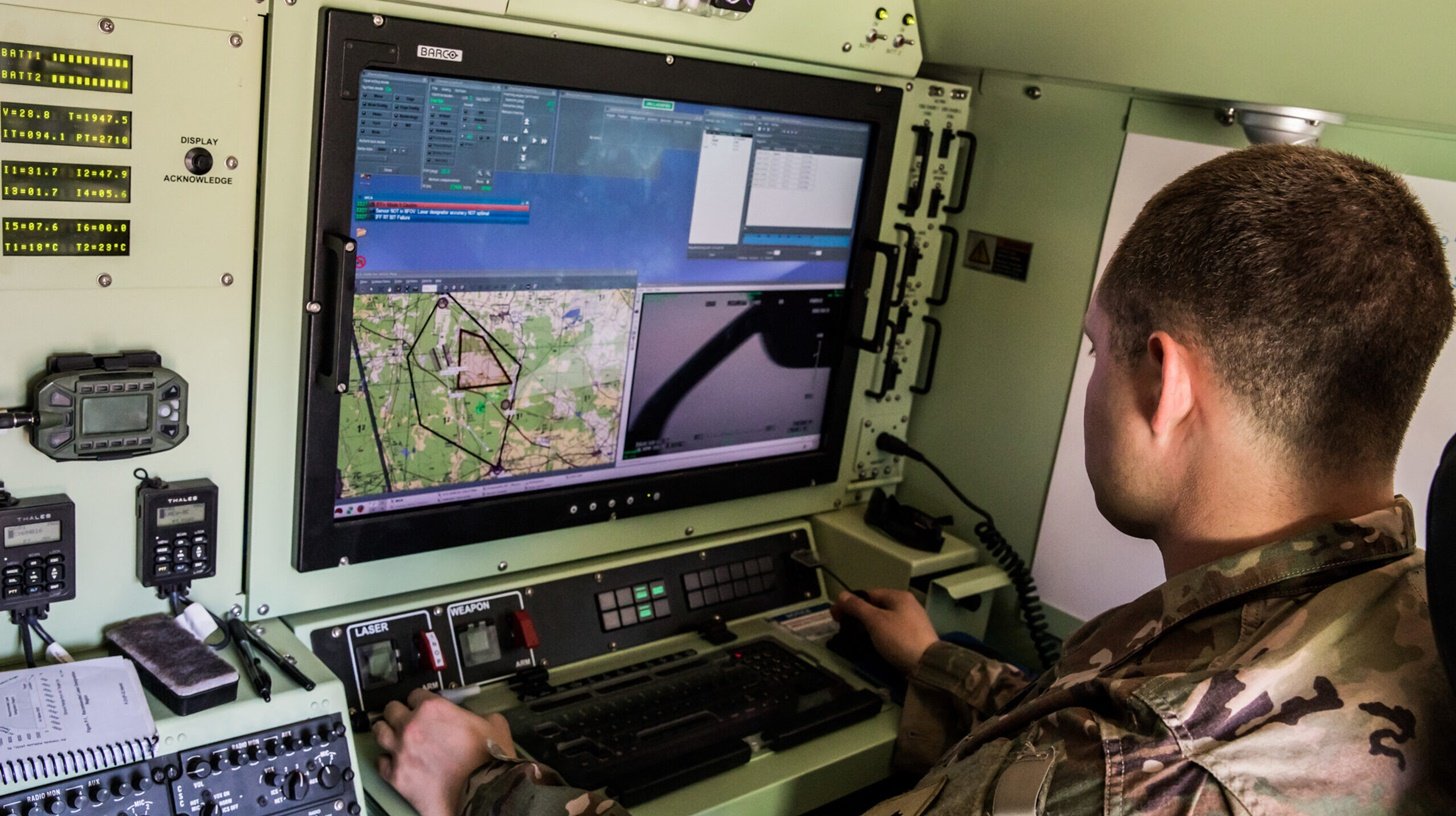


Signal Intelligence (SIGINT) solutions are advanced systems that integrate both hardware and software components to offer comprehensive capabilities across a wide spectrum, ranging from Direct Current (DC) to millimeter waves and beyond. These solutions are designed to provide a seamless and versatile approach to signal processing and analysis.
The hardware component of SIGINT solutions involves the integration of state-of-the-art technology, incorporating the latest generation of Signal Processing algorithms. These algorithms enhance the ability to capture, process, and interpret signals with high precision and efficiency. Additionally, the inclusion of Software Defined Radio (SDR) based wideband radios further enhances the flexibility and adaptability of these systems, allowing for real-time adjustments to different frequency ranges and signal types.
One key strength of these solutions lies in their configurable deployment topologies and platforms. This adaptability ensures that the SIGINT system can be tailored to specific operational requirements and scenarios. Whether it is monitoring communication signals, recording data for later analysis, or classifying different types of signals, these solutions offer a versatile and comprehensive toolkit for intelligence professionals.In essence, Signal Intelligence solutions play a crucial role in modern electronic warfare by providing the means to monitor, record, and classify signals effectively. The combination of advanced hardware, sophisticated signal processing algorithms, and configurable deployment options makes these solutions indispensable for intelligence gathering and electronic surveillance across diverse operational environments.
Signal Intelligence (SIGINT) solutions are advanced systems that integrate both hardware and software components to offer comprehensive capabilities across a wide spectrum, ranging from Direct Current (DC) to milli meter waves and beyond. These solutions are designed to provide a seamless and versatile approach to signal processing and analysis.
The hardware component of SIGINT solutions involves the integration of state-of-the-art technology, incorporating the latest generation of Signal Processing algorithms. These algorithms enhance the ability to capture, process, and interpret signals with high precision and efficiency. Additionally, the inclusion of Software Defined Radio (SDR) based wideband radios further enhances the flexibility and adaptability of these systems, allowing for real-time adjustments to different frequency ranges and signal types.
One key strength of these solutions lies in their configurable deployment topologies and platforms. This adaptability ensures that the SIGINT system can be tailored to specific operational requirements and scenarios. Whether it is monitoring communication signals, recording data for later analysis, or classifying different types of signals, these solutions offer a versatile and comprehensive toolkit for intelligence professionals. In essence, Signal Intelligence solutions play a crucial role in modern electronic warfare by providing the means to monitor, record, and classify signals effectively. The combination of advanced hardware, sophisticated signal processing algorithms, and configurable deployment options makes these solutions indispensable for intelligence gathering and electronic surveillance across diverse operational environments.
Radar


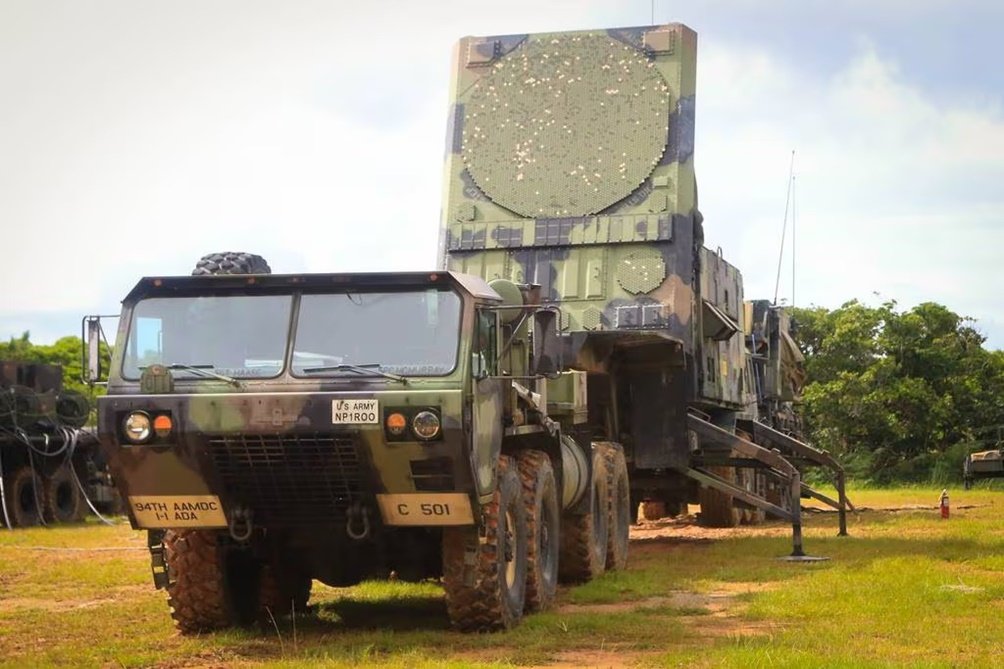
The statement highlights a comprehensive range of capabilities in RADAR system development, showcasing the provider’s profound expertise and versatility in meeting diverse requirements. The proficiency extends from Short-range Low-power RADAR to Long-range High-power systems, indicating a breadth of solutions catering to different operational needs.The mention of Harmonic RADAR, PESA (Passive Electronically Scanned Array), and AESA (Active Electronically Scanned Array) underscores the proficiency in advanced radar technologies. These variations offer unique advantages, with Harmonic RADAR focusing on signal harmonics, while PESA and AESA provide improved beam agility and electronic scanning capabilities.
The inclusion of Static RCS (Radar Cross Section) measurement and Dynamic In-flight measurement emphasizes the provider’s commitment to delivering solutions that address both stationary and moving targets. This versatility is crucial in adapting to various scenarios and mission requirements.
The reference to UWB (Ultra-Wideband) and Pulse-Doppler technologies showcases a dedication to employing cutting-edge methods. UWB enables precise and high-resolution sensing, while Pulse-Doppler enhances the radar’s ability to detect moving targets, contributing to enhanced situational awareness.The diversity in radar applications is evident in the mention of Tracking RADAR, which is vital for monitoring the movement of objects, and Fire-control RADAR, essential for guiding weapons accurately. The provider’s capability extends beyond conventional radar systems to include GPR (Ground Penetrating RADAR) and SAR (Synthetic Aperture RADAR), showcasing adaptability for applications such as subsurface imaging and terrain mapping.Moreover, the commitment to delivering the most optimal solutions integrated with existing systems emphasizes a customer-centric approach, ensuring seamless integration and compatibility with a wide array of operational environments. Overall, this statement outlines a comprehensive and advanced RADAR system development expertise, positioning the provider as a reliable and versatile solution provider in the field.
The statement highlights a comprehensive range of capabilities in RADAR system development, showcasing the provider’s profound expertise and versatility in meeting diverse requirements. The proficiency extends from Short-range Low-power RADAR to Long-range High-power systems, indicating a breadth of solutions catering to different operational needs. The mention of Harmonic RADAR, PESA (Passive Electronically Scanned Array), and AESA (Active Electronically Scanned Array) underscores the proficiency in advanced radar technologies. These variations offer unique advantages, with Harmonic RADAR focusing on signal harmonics, while PESA and AESA provide improved beam agility and electronic scanning capabilities.
The inclusion of Static RCS (Radar Cross Section) measurement and Dynamic In-flight measurement emphasizes the provider’s commitment to delivering solutions that address both stationary and moving targets. This versatility is crucial in adapting to various scenarios and mission requirements.
The reference to UWB (Ultra-Wideband) and Pulse-Doppler technologies showcases a dedication to employing cutting-edge methods. UWB enables precise and high-resolution sensing, while Pulse-Doppler enhances the radar’s ability to detect moving targets, contributing to enhanced situational awareness. The diversity in radar applications is evident in the mention of Tracking RADAR, which is vital for monitoring the movement of objects, and Fire-control RADAR, essential for guiding weapons accurately. The provider’s capability extends beyond conventional radar systems to include GPR (Ground Penetrating RADAR) and SAR (Synthetic Aperture RADAR), showcasing adaptability for applications such as subsurface imaging and terrain mapping. Moreover, the commitment to delivering the most optimal solutions integrated with existing systems emphasizes a customer-centric approach, ensuring seamless integration and compatibility with a wide array of operational environments. Overall, this statement outlines a comprehensive and advanced RADAR system development expertise, positioning the provider as a reliable and versatile solution provider in the field.
Tactical Communication
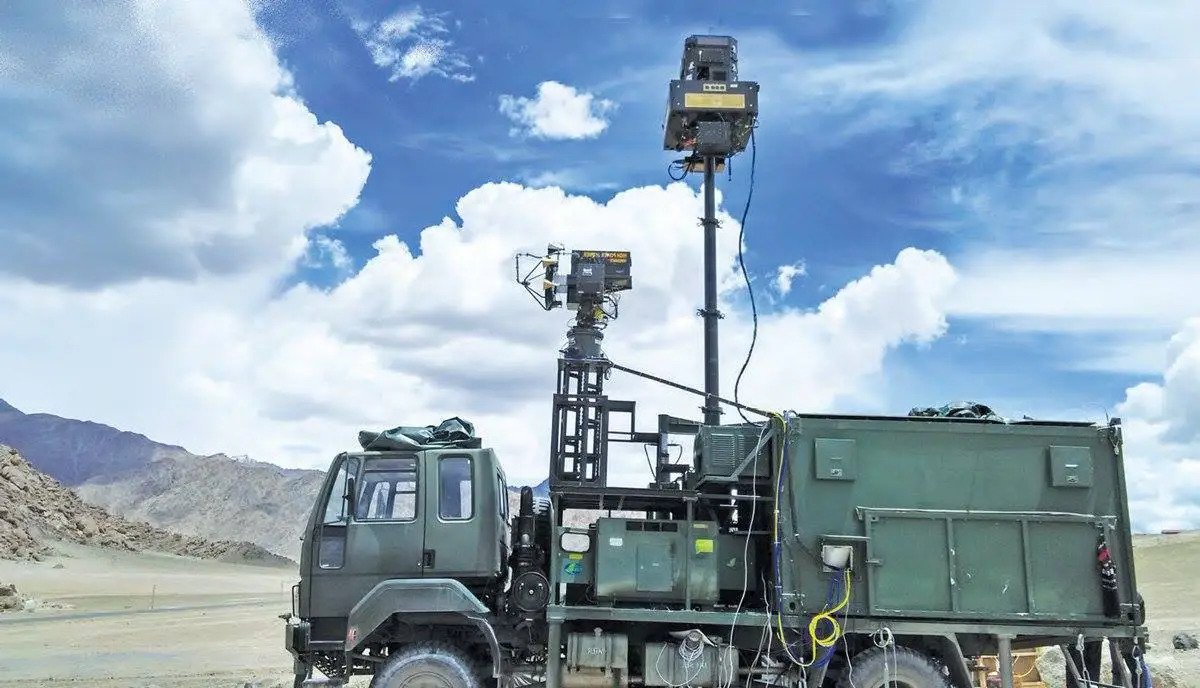

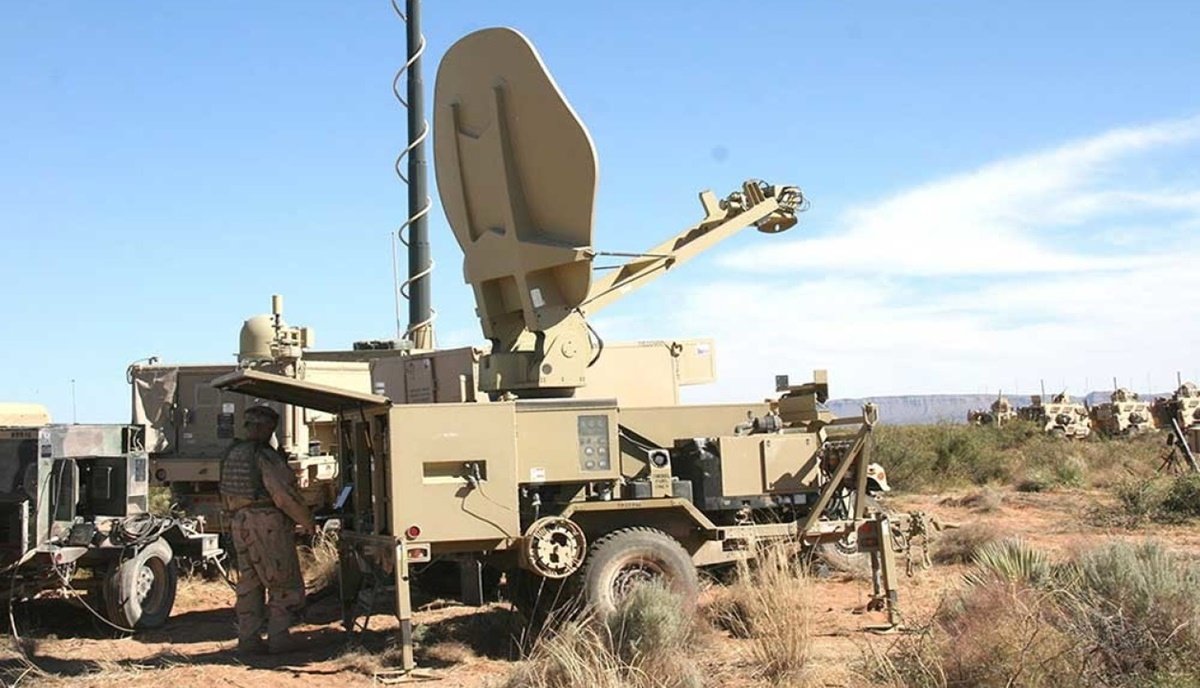
The statement highlights the versatility and comprehensive capabilities of Tactical Communication products in military and emergency response scenarios. These products seamlessly integrate static deployments with swiftly deployable mobile solutions, ensuring a holistic approach to communication that enhances situational awareness.
The Tactical LTE Network stands out as a pivotal solution, providing a robust and secure communication infrastructure in the field. It enables high-speed data transfer, real-time video streaming, and reliable voice communication, crucial for coordination and decision-making in dynamic operational environments. The Manpack LTE Network complements this by offering a portable, on-the-go communication solution, allowing personnel to stay connected while on the move.
COFDM (Coded Orthogonal Frequency Division Multiplexing) Video links represent another key component, offering secure and high-quality video transmission. These links are vital for transmitting live feeds from unmanned aerial vehicles (UAVs), surveillance cameras, or other sources, providing valuable visual intelligence to commanders and operators.
Mesh Radio-based high-throughput networks further enhance communication capabilities by creating a self-healing and resilient network infrastructure. This technology allows for the rapid deployment of ad-hoc communication networks, ensuring connectivity in challenging terrains or during emergencies.In essence, the Tactical Communication products provide a well-rounded suite of solutions that cater to both static and rapidly changing operational scenarios. The integration of LTE networks, portable communication options, video links, and mesh radio networks collectively contributes to a comprehensive and adaptive communication system, significantly improving the overall situational awareness and operational effectiveness in the field.
The statement highlights the versatility and comprehensive capabilities of Tactical Communication products in military and emergency response scenarios. These products seamlessly integrate static deployments with swiftly deployable mobile solutions, ensuring a holistic approach to communication that enhances situational awareness.
The Tactical LTE Network stands out as a pivotal solution, providing a robust and secure communication infrastructure in the field. It enables high-speed data transfer, real-time video streaming, and reliable voice communication, crucial for coordination and decision-making in dynamic operational environments. The Manpack LTE Network complements this by offering a portable, on-the-go communication solution, allowing personnel to stay connected while on the move.
COFDM (Coded Orthogonal Frequency Division Multiplexing) Video links represent another key component, offering secure and high-quality video transmission. These links are vital for transmitting live feeds from unmanned aerial vehicles (UAVs), surveillance cameras, or other sources, providing valuable visual intelligence to commanders and operators.
Mesh Radio-based high-throughput networks further enhance communication capabilities by creating a self-healing and resilient network infrastructure. This technology allows for the rapid deployment of ad-hoc communication networks, ensuring connectivity in challenging terrains or during emergencies.In essence, the Tactical Communication products provide a well-rounded suite of solutions that cater to both static and rapidly changing operational scenarios. The integration of LTE networks, portable communication options, video links, and mesh radio networks collectively contributes to a comprehensive and adaptive communication system, significantly improving the overall situational awareness and operational effectiveness in the field.
Direction Finder



Software Defined Radio (SDR) based Direction Finders represent a cutting-edge technology that enhances the capabilities of signal monitoring and tracking. Unlike traditional direction finding systems, SDR-based solutions offer versatility and adaptability by leveraging software to process radio signals. This adaptability enables Multi-Signal monitoring and tracking, a crucial feature in complex electronic warfare scenarios.
The choice of Direction Finding (DF) methodology depends on several factors, including the deployment platform, form factor, operating environment, and performance requirements. One widely used approach is the Watson-Watt technique, which involves triangulating the direction of a signal based on the time delay of its arrival at different locations. Pulse-Doppler DF relies on the Doppler effect to detect moving targets and determine their direction.
Phase Interferometry is another method that utilizes interference patterns to ascertain the direction of a signal source accurately. Angle of Arrival (AoA) involves measuring the angle at which a signal arrives at the receiver, while Power on Arrival (PoA) focuses on determining the power level of the received signal. Time Difference of Arrival (TDoA) is a technique that calculates the time delay between the reception of a signal at multiple locations.The flexibility of SDR-based Direction Finders allows for the selection of the most appropriate technique based on specific mission requirements. Whether it’s rapid deployment, precise location determination, or adaptability to diverse operational environments, these systems provide a crucial advantage in modern electronic warfare scenarios.
Software Defined Radio (SDR) based Direction Finders represent a cutting-edge technology that enhances the capabilities of signal monitoring and tracking. Unlike traditional direction finding systems, SDR-based solutions offer versatility and adaptability by leveraging software to process radio signals. This adaptability enables Multi-Signal monitoring and tracking, a crucial feature in complex electronic warfare scenarios.
The choice of Direction Finding (DF) methodology depends on several factors, including the deployment platform, form factor, operating environment, and performance requirements. One widely used approach is the Watson-Watt technique, which involves triangulating the direction of a signal based on the time delay of its arrival at different locations. Pulse-Doppler DF relies on the Doppler effect to detect moving targets and determine their direction.
Phase Interferometry is another method that utilizes interference patterns to ascertain the direction of a signal source accurately. Angle of Arrival (AoA) involves measuring the angle at which a signal arrives at the receiver, while Power on Arrival (PoA) focuses on determining the power level of the received signal. Time Difference of Arrival (TDoA) is a technique that calculates the time delay between the reception of a signal at multiple locations.The flexibility of SDR-based Direction Finders allows for the selection of the most appropriate technique based on specific mission requirements. Whether it’s rapid deployment, precise location determination, or adaptability to diverse operational environments, these systems provide a crucial advantage in modern electronic warfare scenarios.
TSCM Technical Surveillance Countermeasures
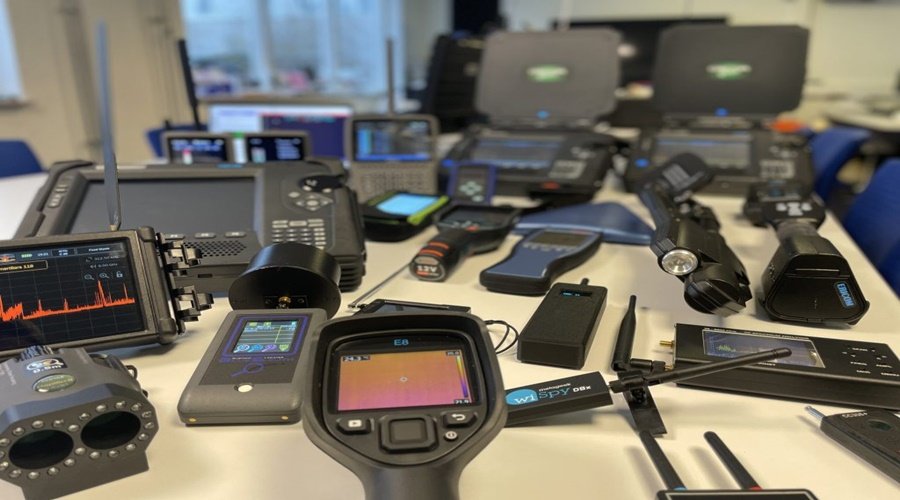
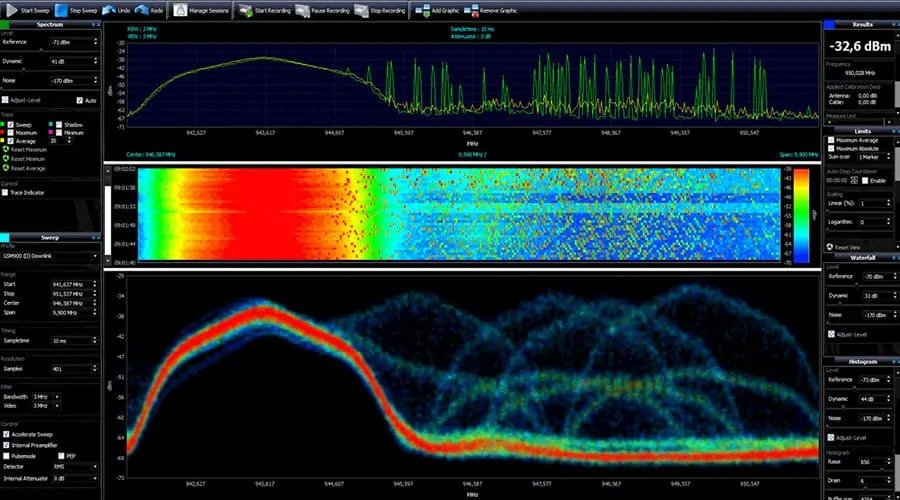
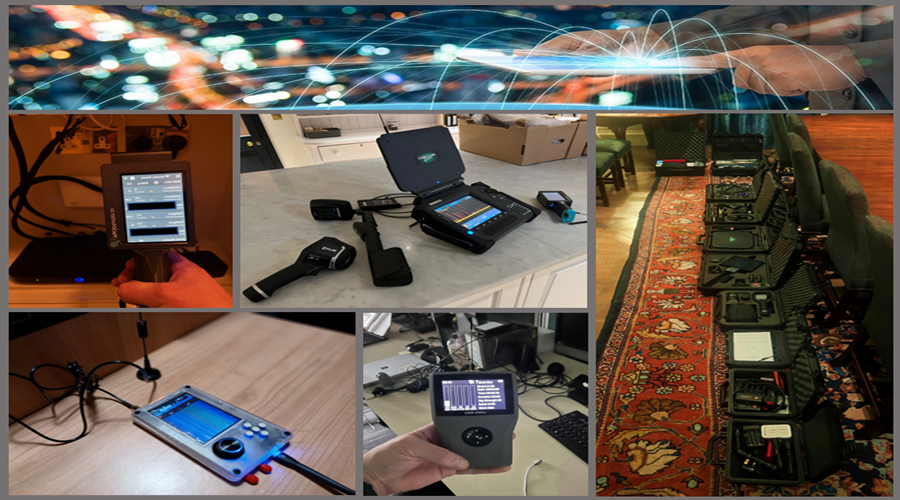
Technical Surveillance Countermeasures (TSCM) has become increasingly vital in the face of advancing miniature recording devices and mobile phone technologies, posing potential threats to security and privacy. In response to this, specialized tools are designed and delivered to effectively counteract these risks.
The Cellphone Detector is a crucial component of TSCM, aimed at identifying and locating active mobile phones within a given area. This device enables security personnel to detect unauthorized or covert use of mobile communication devices, helping to mitigate the risk of information leakage or unauthorized access.
The Non-Linear Junction Detector (NLJD) is another essential tool in TSCM, specifically designed to detect hidden electronic devices that may contain recording capabilities. NLJD works by emitting radio frequency signals and identifying non-linear junctions, which are indicative of electronic components. This helps in uncovering concealed listening devices or cameras that may be strategically placed to capture sensitive information.
The Electronic Stethoscope is a specialized listening device used in TSCM to identify audio signals emanating from hidden surveillance devices. This tool allows security experts to listen for anomalies or transmissions that may indicate the presence of covert recording devices, providing a proactive approach to countering eavesdropping threats.In summary, TSCM employs a suite of sophisticated tools, including Cellphone Detectors, NLJDs, and Electronic Stethoscopes, to safeguard against the rising threat of miniature recording devices and mobile phones. These technologies play a crucial role in maintaining the integrity of secure environments by identifying and neutralizing potential risks to sensitive information and communication systems.
Technical Surveillance Countermeasures (TSCM) has become increasingly vital in the face of advancing miniature recording devices and mobile phone technologies, posing potential threats to security and privacy. In response to this, specialized tools are designed and delivered to effectively counteract these risks.
The Cell phone Detector is a crucial component of TSCM, aimed at identifying and locating active mobile phones within a given area. This device enables security personnel to detect unauthorized or covert use of mobile communication devices, helping to mitigate the risk of information leakage or unauthorized access.
The Non-Linear Junction Detector (NLJD) is another essential tool in TSCM, specifically designed to detect hidden electronic devices that may contain recording capabilities. NLJD works by emitting radio frequency signals and identifying non-linear junctions, which are indicative of electronic components. This helps in uncovering concealed listening devices or cameras that may be strategically placed to capture sensitive information.
The Electronic Stethoscope is a specialized listening device used in TSCM to identify audio signals emanating from hidden surveillance devices. This tool allows security experts to listen for anomalies or transmissions that may indicate the presence of covert recording devices, providing a proactive approach to countering eavesdropping threats.In summary, TSCM employs a suite of sophisticated tools, including Cellphone Detectors, NLJDs, and Electronic Stethoscopes, to safeguard against the rising threat of miniature recording devices and mobile phones. These technologies play a crucial role in maintaining the integrity of secure environments by identifying and neutralizing potential risks to sensitive information and communication systems.
Big Data Analysis



Big Data Analysis is a comprehensive approach to extracting valuable insights from large and complex datasets, and it involves several key solutions to enhance the process of gathering and analysing information.Data Fusion and Analytics is a crucial component of Big Data Analysis, involving the integration of diverse datasets from various sources. This process helps in creating a comprehensive and unified view, allowing analysts to draw meaningful conclusions. By combining information from disparate sources, such as sensor networks, social media, and traditional databases, analysts can gain a more holistic understanding of events and trends.
Deep Packet Inspection (DPI) is a technology used in network analysis to inspect and analyse the content of data packets flowing through a network. This level of scrutiny enables a more granular understanding of network traffic, helping to identify patterns, anomalies, or potential security threats. DPI is especially valuable for monitoring and optimizing network performance, as well as for detecting and preventing malicious activities.
Open-Source Intelligence (OSINT) is another critical aspect of Big Data Analysis. It involves collecting and analysing publicly available information from various sources, such as news articles, social media, and government reports. OSINT provides valuable context and additional data points to enhance decision-making and intelligence gathering.Together, these solutions within the realm of Big Data Analysis empower organizations to harness the potential of vast and varied datasets. By utilizing data fusion, deep packet inspection, and open-source intelligence, analysts can derive actionable intelligence, make informed decisions, and gain a competitive edge in fields ranging from cyber security to business analytics. The integration of these tools contributes to a more comprehensive and nuanced understanding of the complex data landscape in today’s information-driven world.
Big Data Analysis is a comprehensive approach to extracting valuable insights from large and complex datasets, and it involves several key solutions to enhance the process of gathering and analysing information. Data Fusion and Analytics is a crucial component of Big Data Analysis, involving the integration of diverse datasets from various sources. This process helps in creating a comprehensive and unified view, allowing analysts to draw meaningful conclusions. By combining information from disparate sources, such as sensor networks, social media, and traditional databases, analysts can gain a more holistic understanding of events and trends.
Deep Packet Inspection (DPI) is a technology used in network analysis to inspect and analyse the content of data packets flowing through a network. This level of scrutiny enables a more granular understanding of network traffic, helping to identify patterns, anomalies, or potential security threats. DPI is especially valuable for monitoring and optimizing network performance, as well as for detecting and preventing malicious activities.
Open-Source Intelligence (OSINT) is another critical aspect of Big Data Analysis. It involves collecting and analysing publicly available information from various sources, such as news articles, social media, and government reports. OSINT provides valuable context and additional data points to enhance decision-making and intelligence gathering. Together, these solutions within the realm of Big Data Analysis empower organizations to harness the potential of vast and varied datasets. By utilizing data fusion, deep packet inspection, and open-source intelligence, analysts can derive actionable intelligence, make informed decisions, and gain a competitive edge in fields ranging from cyber security to business analytics. The integration of these tools contributes to a more comprehensive and nuanced understanding of the complex data landscape in today’s information-driven world.
Satellite and Space Data Analytics
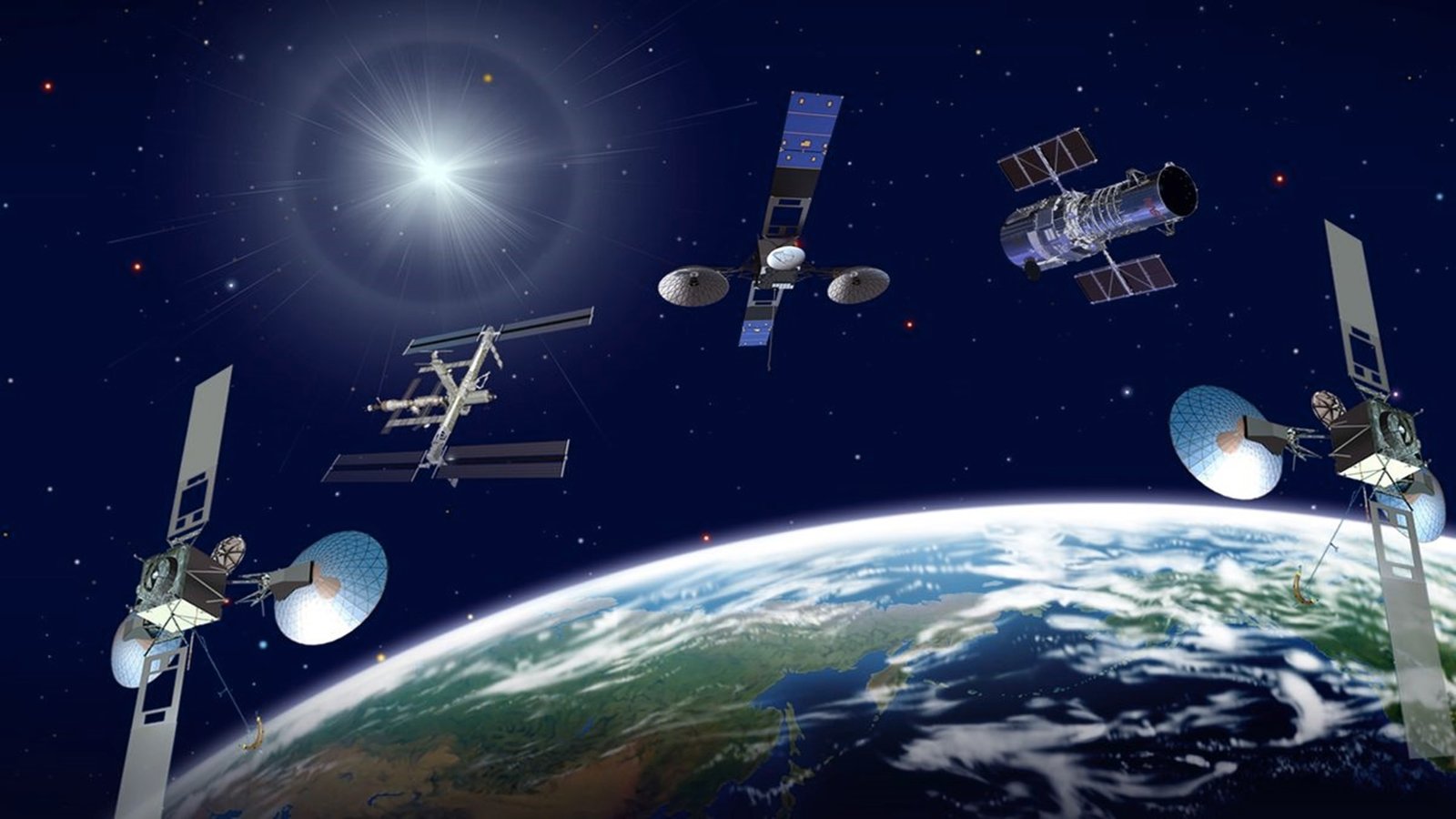

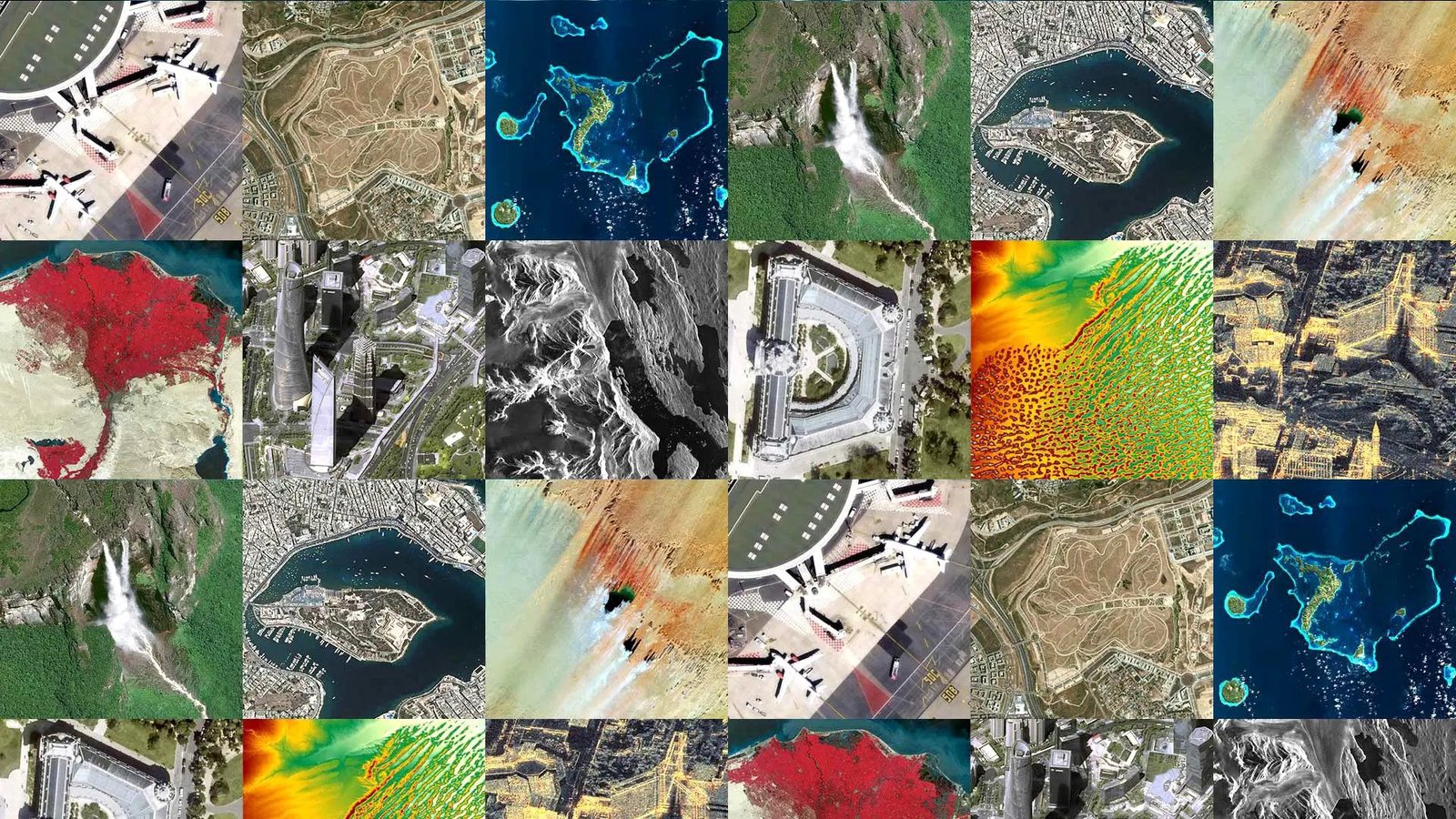
Satellite and Space Data Analytics represents a transformative approach to extracting actionable insights from vast repositories of satellite-generated information. This cutting-edge discipline involves the application of advanced analytical techniques to interpret data acquired from satellites orbiting Earth. By harnessing the power of satellite imagery, this technology enables a comprehensive understanding of Earth’s dynamics, climate patterns, and resource distribution.
The applications are diverse, spanning sectors such as agriculture, environmental monitoring, disaster management, and urban planning. Through the amalgamation of machine learning algorithms and big data analytics, Satellite and Space Data Analytics significantly enhances the extraction of meaningful patterns from immense datasets. This fusion empowers predictive modeling, trend analysis, and the identification of correlations that may elude traditional analytical methods.
The technology proves indispensable in optimizing resource allocation, predicting and managing natural disasters, and fostering sustainable practices. Its impact extends across various domains, aiding industries, governments, and research institutions in making informed decisions. By providing a holistic view of our dynamic planet from space, Satellite and Space Data Analytics emerges as a pivotal tool for navigating the intricacies of environmental changes, contributing to a more resilient and sustainable future.
Satellite and Space Data Analytics represents a transformative approach to extracting actionable insights from vast repositories of satellite-generated information. This cutting-edge discipline involves the application of advanced analytical techniques to interpret data acquired from satellites orbiting Earth. By harnessing the power of satellite imagery, this technology enables a comprehensive understanding of Earth’s dynamics, climate patterns, and resource distribution.
The applications are diverse, spanning sectors such as agriculture, environmental monitoring, disaster management, and urban planning. Through the amalgamation of machine learning algorithms and big data analytics, Satellite and Space Data Analytics significantly enhances the extraction of meaningful patterns from immense datasets. This fusion empowers predictive modelling, trend analysis, and the identification of correlations that may elude traditional analytical methods.
The technology proves indispensable in optimizing resource allocation, predicting and managing natural disasters, and fostering sustainable practices. Its impact extends across various domains, aiding industries, governments, and research institutions in making informed decisions. By providing a holistic view of our dynamic planet from space, Satellite and Space Data Analytics emerges as a pivotal tool for navigating the intricacies of environmental changes, contributing to a more resilient and sustainable future.
Artificial Intelligence, Machine Learning, Deep Learning Solutions
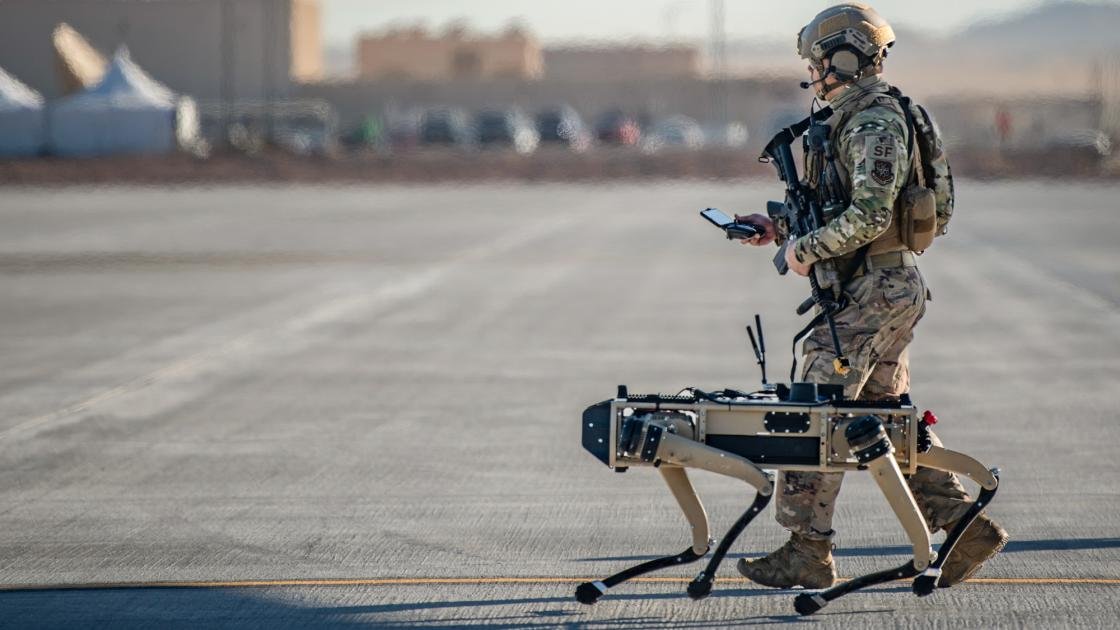


Artificial Intelligence (AI), Machine Learning (ML), and Deep Learning represent transformative technologies at the forefront of innovation. AI encompasses the creation of intelligent machines that can simulate human-like cognitive functions. Machine Learning, a subset of AI, focuses on developing algorithms enabling systems to learn and make data-driven decisions autonomously, evolving with experience.
Deep Learning, an advanced form of ML, involves artificial neural networks that emulate the human brain’s structure, allowing for intricate data processing and pattern recognition. These technologies collectively empower systems to comprehend, adapt, and improve performance without explicit programming.
In practical terms, AI, ML, and Deep Learning solutions find applications across diverse sectors. From enhancing data analytics and predictive modeling to revolutionizing image and speech recognition, these technologies optimize efficiency and accuracy in complex tasks. They also play a pivotal role in natural language processing, enabling machines to understand and respond to human language nuances.
In healthcare, AI facilitates diagnosis through pattern recognition, while in finance, ML aids fraud detection and risk management. Autonomous vehicles leverage Deep Learning for advanced perception and decision-making. As the capabilities of these technologies expand, the potential for groundbreaking solutions in various industries continues to grow, shaping a future where intelligent systems redefine the way we work, communicate, and innovate.
Artificial Intelligence (AI), Machine Learning (ML), and Deep Learning represent transformative technologies at the forefront of innovation. AI encompasses the creation of intelligent machines that can simulate human-like cognitive functions. Machine Learning, a subset of AI, focuses on developing algorithms enabling systems to learn and make data-driven decisions autonomously, evolving with experience.
Deep Learning, an advanced form of ML, involves artificial neural networks that emulate the human brain’s structure, allowing for intricate data processing and pattern recognition. These technologies collectively empower systems to comprehend, adapt, and improve performance without explicit programming.
In practical terms, AI, ML, and Deep Learning solutions find applications across diverse sectors. From enhancing data analytics and predictive modelling to revolutionize image and speech recognition, these technologies optimize efficiency and accuracy in complex tasks. They also play a pivotal role in natural language processing, enabling machines to understand and respond to human language nuances.
In healthcare, AI facilitates diagnosis through pattern recognition, while in finance, ML aids fraud detection and risk management. Autonomous vehicles leverage Deep Learning for advanced perception and decision-making. As the capabilities of these technologies expand, the potential for groundbreaking solutions in various industries continues to grow, shaping a future where intelligent systems redefine the way we work, communicate, and innovate.
5G Massive MIMO & Millimeter wave solutions

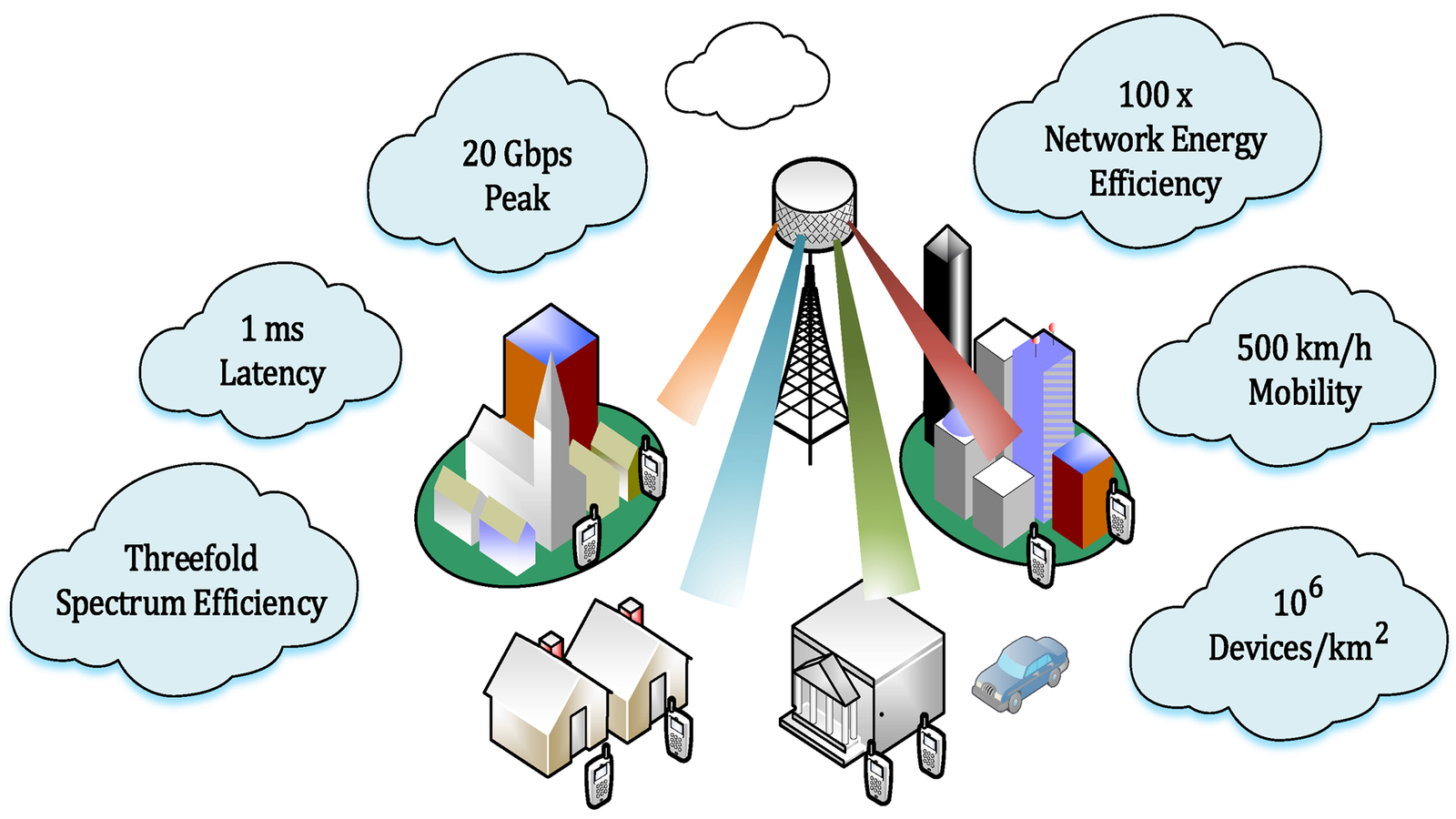

5G Massive MIMO (Multiple Input, Multiple Output) and Millimeter-Wave Solutions represent a transformative leap in wireless communication technology. Massive MIMO involves deploying a large number of antennas at base stations, allowing simultaneous communication with multiple users, significantly increasing network capacity and data rates. This spatial multiplexing enhances spectral efficiency and enables a more efficient use of available spectrum.
Millimeter-wave technology utilizes high-frequency bands, typically above 24 GHz, to transmit data at exceptionally high speeds. These frequencies provide wide bandwidths, enabling the transmission of large amounts of data in a short time, thus facilitating the ultra-fast connectivity promised by 5G networks.
The synergy of Massive MIMO and Millimeter-Wave Solutions is pivotal in realizing the promises of 5G, delivering unprecedented data speeds and low-latency communication. This combination is particularly beneficial in dense urban environments where network congestion is common, as it enables a higher density of connections.
However, challenges such as signal propagation limitations in millimeter-wave bands and increased network complexity require innovative solutions. Advanced beamforming techniques and sophisticated signal processing algorithms are employed to overcome these challenges, ensuring reliable and robust 5G connectivity.
Overall, 5G Massive MIMO and Millimeter-Wave Solutions mark a paradigm shift in wireless communication, offering the potential for revolutionary applications in areas such as augmented reality, autonomous vehicles, and the Internet of Things (IoT).
5G Massive MIMO (Multiple Input, Multiple Output) and Millimeter-Wave Solutions represent a transformative leap in wireless communication technology. Massive MIMO involves deploying a large number of antennas at base stations, allowing simultaneous communication with multiple users, significantly increasing network capacity and data rates. This spatial multiplexing enhances spectral efficiency and enables a more efficient use of available spectrum.
Millimeter-wave technology utilizes high-frequency bands, typically above 24 GHz, to transmit data at exceptionally high speeds. These frequencies provide wide bandwidths, enabling the transmission of large amounts of data in a short time, thus facilitating the ultra-fast connectivity promised by 5G networks.
The synergy of Massive MIMO and Millimeter-Wave Solutions is pivotal in realizing the promises of 5G, delivering unprecedented data speeds and low-latency communication. This combination is particularly beneficial in dense urban environments where network congestion is common, as it enables a higher density of connections.
However, challenges such as signal propagation limitations in millimeter-wave bands and increased network complexity require innovative solutions. Advanced beamforming techniques and sophisticated signal processing algorithms are employed to overcome these challenges, ensuring reliable and robust 5G connectivity.
Overall, 5G Massive MIMO and Millimeter-Wave Solutions mark a paradigm shift in wireless communication, offering the potential for revolutionary applications in areas such as augmented reality, autonomous vehicles, and the Internet of Things (IoT).
iot software AI drones EW and ESM

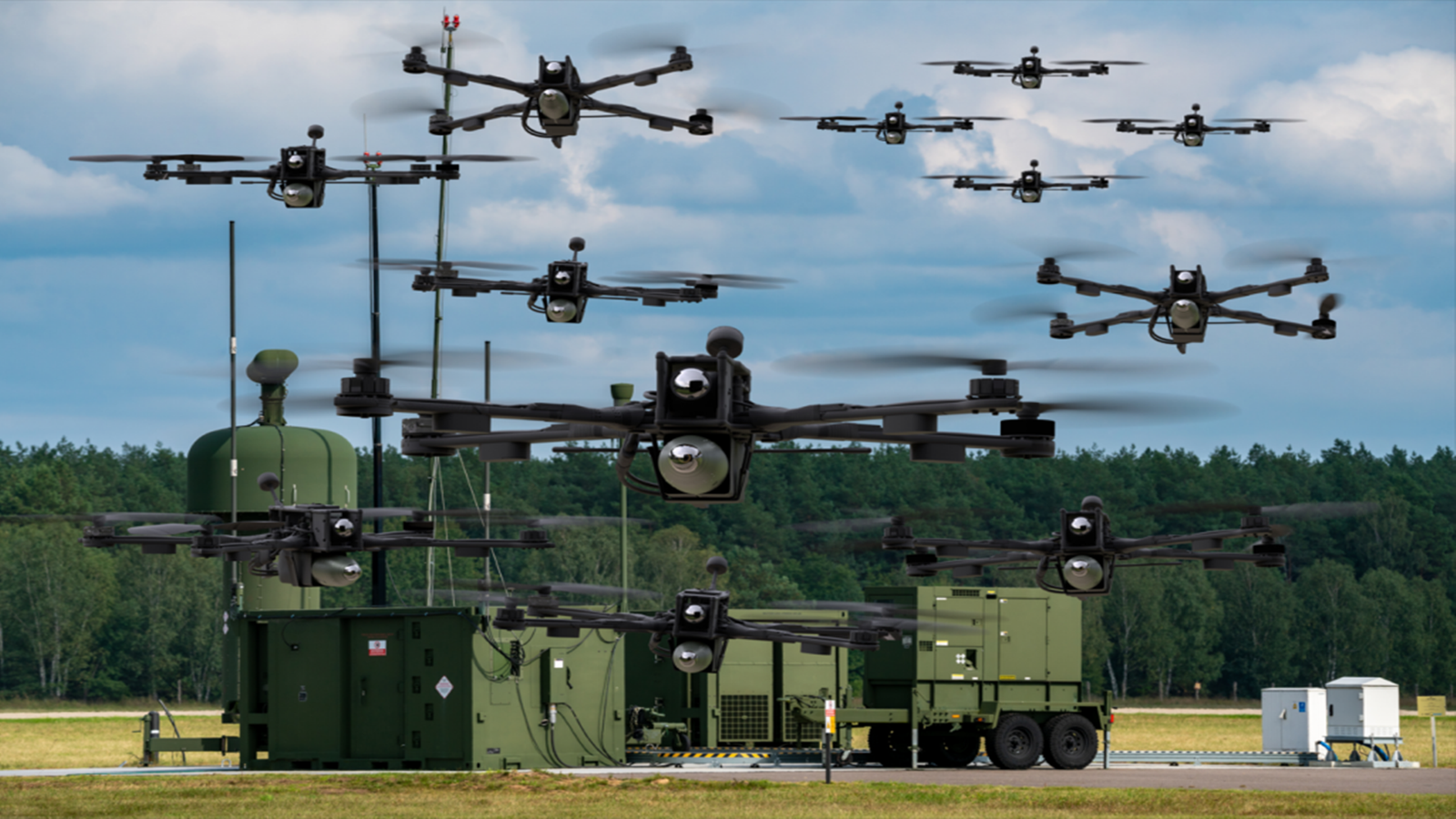
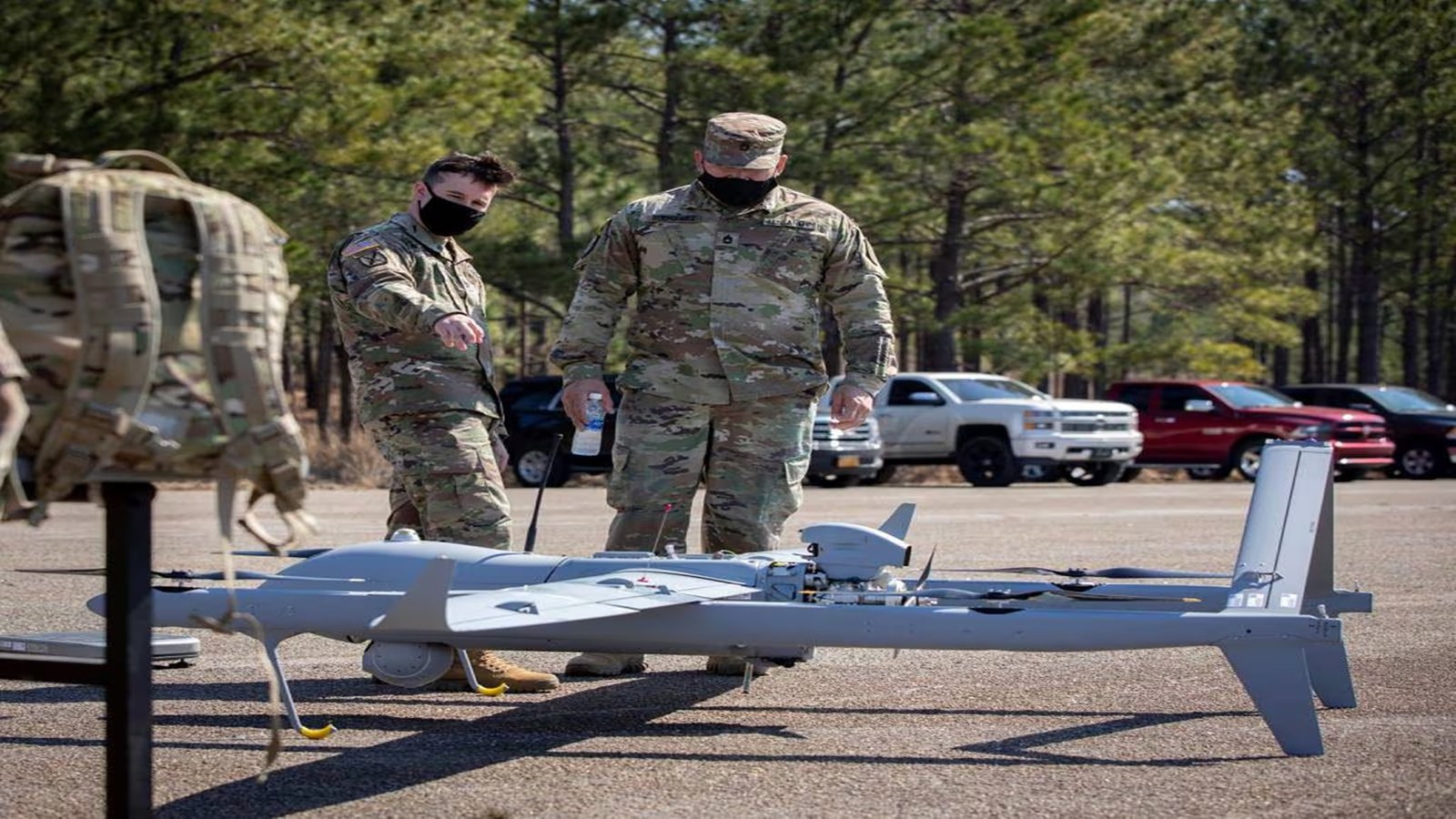
The convergence of IoT software, AI, and drones has ushered in a new era of advanced capabilities, particularly in the realm of Electronic Warfare (EW) and Electronic Support Measures (ESM). IoT software facilitates seamless communication and data exchange between interconnected devices, enabling real-time insights and heightened operational efficiency. Artificial Intelligence (AI) augments decision-making processes, empowering drones with autonomous functionalities, predictive analytics, and adaptive responses.
In the context of EW and ESM, these technologies synergize to create sophisticated systems. AI algorithms enhance the ability of drones to analyze electronic signals swiftly, identify patterns, and autonomously adapt to dynamic electromagnetic environments. This fusion of technologies enables intelligent drones to execute Electronic Countermeasures (ECM) effectively, disrupting adversary communication and radar systems.
Moreover, ESM capabilities are elevated through IoT-enabled sensors and AI-driven signal processing, providing comprehensive situational awareness. Drones equipped with these technologies can conduct electronic reconnaissance, signal interception, and analysis, offering a vital edge in modern warfare scenarios.
This holistic integration of IoT software, AI, and drones in EW and ESM underscores a paradigm shift, empowering defense forces with unparalleled capabilities for monitoring, analyzing, and responding to electronic threats in a rapidly evolving technological landscape.
The convergence of IoT software, AI, and drones has ushered in a new era of advanced capabilities, particularly in the realm of Electronic Warfare (EW) and Electronic Support Measures (ESM). IoT software facilitates seamless communication and data exchange between interconnected devices, enabling real-time insights and heightened operational efficiency. Artificial Intelligence (AI) augments decision-making processes, empowering drones with autonomous functionalities, predictive analytics, and adaptive responses.
In the context of EW and ESM, these technologies synergize to create sophisticated systems. AI algorithms enhance the ability of drones to analyze electronic signals swiftly, identify patterns, and autonomously adapt to dynamic electromagnetic environments. This fusion of technologies enables intelligent drones to execute Electronic Countermeasures (ECM) effectively, disrupting adversary communication and radar systems.
Moreover, ESM capabilities are elevated through IoT-enabled sensors and AI-driven signal processing, providing comprehensive situational awareness. Drones equipped with these technologies can conduct electronic reconnaissance, signal interception, and analysis, offering a vital edge in modern warfare scenarios.
This holistic integration of IoT software, AI, and drones in EW and ESM underscores a paradigm shift, empowering defense forces with unparalleled capabilities for monitoring, analyzing, and responding to electronic threats in a rapidly evolving technological landscape.
Elevating Industries through Innovation Expertise and Research Services.
"Innovation Expertise & Research Services"
Conceptualize
Design
Prototype
Pilot Production
Mass Production
After market/
Life Cycle Support
Conceptualize
Design
Prototype
Pilot Production
Mass Production
After market/
Life Cycle Support
Radozar Pvt Ltd takes pride in the operational prowess of our advanced manufacturing facilities, led by a dedicated team of seasoned professionals who uphold stringent quality standards. We specialize in providing comprehensive Electronics Manufacturing Services (EMS), emphasizing PCB Assembly with Surface Mount Technology (SMD) in adherence to ROHS/lead-free specifications. Our turnkey product development services cater to diverse sectors, such as Medical, Automotive, Lighting, Audio, Energy Automation, Instrumentation, and Telecom. With an unwavering commitment to excellence, Radozar Pvt Ltd ensures a seamless integration of quality, innovation, and efficiency in every project. From the precision-driven realm of medical electronics to the dynamic landscape of automotive technology, our company remains at the forefront, delivering cutting-edge solutions that define reliability and sophistication in electronic manufacturing and product development.
Transformative Global Education Solutions Empowering Over 1 Million Students Worldwide
Training

Radozar Pvt Ltd takes pride in its widespread global impact, with Training and Research and Development systems operational in over 7 countries. Our innovative products have successfully trained over 500+ students, setting a benchmark for excellence. Beyond integration into standard curricula, Radozar’s solutions are custom-tailored for Defense training institutes, providing realistic simulations of deployed systems. As a leading force in education technology, Radozar Pvt Ltd continues to shape the learning landscape, delivering cutting-edge solutions that transcend borders and empower students worldwide.

“Seamless Solutions, Anytime, Anywhere. Contact us for professional problem-solving expertise – your challenges are our priority. We’re here around the clock to ensure your success.”

